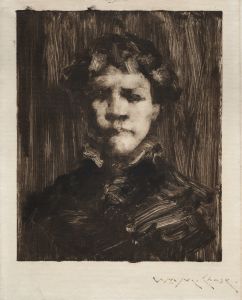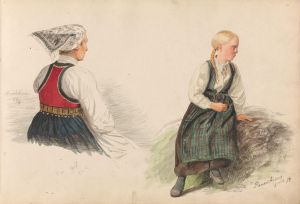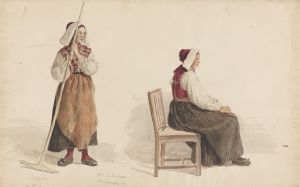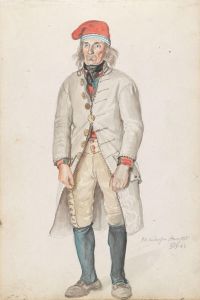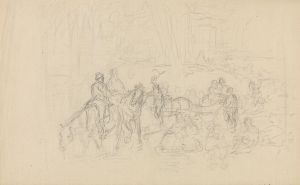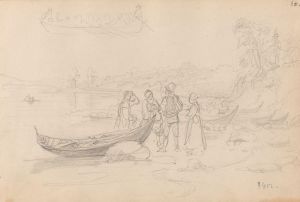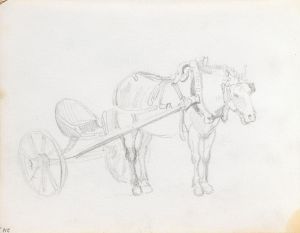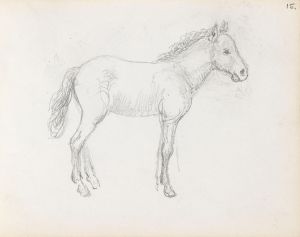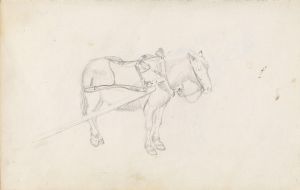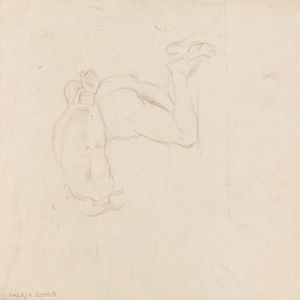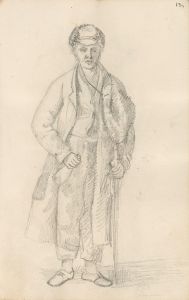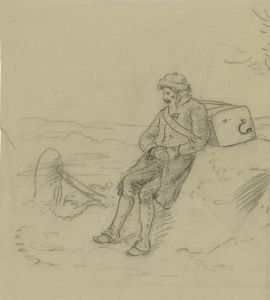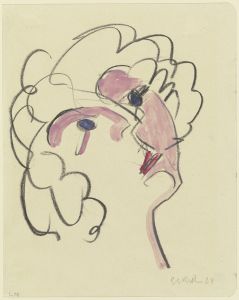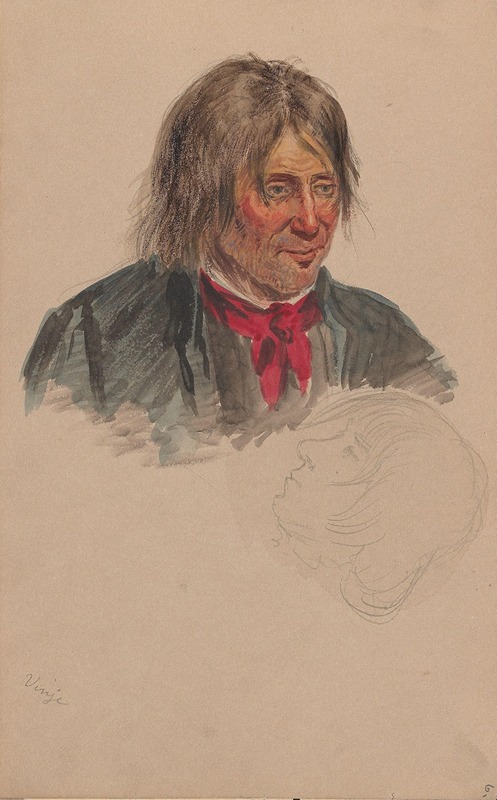
Mannsportrett, Vinje; mannshode
A hand-painted replica of Adolph Tidemand’s masterpiece Mannsportrett, Vinje; mannshode, meticulously crafted by professional artists to capture the true essence of the original. Each piece is created with museum-quality canvas and rare mineral pigments, carefully painted by experienced artists with delicate brushstrokes and rich, layered colors to perfectly recreate the texture of the original artwork. Unlike machine-printed reproductions, this hand-painted version brings the painting to life, infused with the artist’s emotions and skill in every stroke. Whether for personal collection or home decoration, it instantly elevates the artistic atmosphere of any space.
Adolph Tidemand was a prominent Norwegian painter in the 19th century, known for his detailed and realistic depictions of Norwegian folk life and culture. One of his works, "Mannsportrett, Vinje; mannshode," is a portrait that exemplifies his skill in capturing the character and essence of his subjects.
Adolph Tidemand was born on August 14, 1814, in Mandal, Norway. He studied art in Copenhagen and later in Düsseldorf, which was a significant center for art education at the time. Tidemand became associated with the Düsseldorf school of painting, known for its detailed and realistic style, which greatly influenced his work. His paintings often focused on Norwegian themes, capturing the everyday life, traditions, and landscapes of Norway.
"Mannsportrett, Vinje; mannshode" is a portrait that reflects Tidemand's interest in Norwegian cultural identity. The painting is a study of a man's head, showcasing Tidemand's ability to convey personality and emotion through facial expressions and details. Although specific details about the subject of this portrait are not widely documented, it is consistent with Tidemand's broader body of work, which often included portraits of Norwegian peasants and rural figures.
Tidemand's portraits are noted for their meticulous attention to detail and their ability to convey the dignity and individuality of his subjects. In "Mannsportrett, Vinje; mannshode," Tidemand likely employed his characteristic use of light and shadow to enhance the three-dimensionality of the subject's face, a technique that adds depth and realism to the portrait. The painting would have been executed with a focus on naturalism, a hallmark of Tidemand's style, which sought to present his subjects in an authentic and respectful manner.
Throughout his career, Tidemand collaborated with other artists, most notably with Hans Gude, with whom he created several famous works, including "Bridal Procession on the Hardangerfjord." While "Mannsportrett, Vinje; mannshode" is a more intimate work compared to his larger collaborative pieces, it still reflects his dedication to portraying Norwegian life with sincerity and respect.
Tidemand's work, including "Mannsportrett, Vinje; mannshode," played a significant role in the development of Norwegian national identity in art during the 19th century. His paintings are celebrated for their contribution to the Romantic Nationalism movement in Norway, which sought to establish a distinct cultural identity through art and literature. By focusing on Norwegian subjects and themes, Tidemand helped to foster a sense of pride and appreciation for Norway's cultural heritage.
Adolph Tidemand passed away on August 25, 1876, in Christiania (now Oslo), Norway. His legacy continues to be celebrated in Norway and beyond, with his works held in high regard for their artistic quality and cultural significance. "Mannsportrett, Vinje; mannshode" remains a testament to Tidemand's skill as a portraitist and his commitment to capturing the essence of Norwegian life and character.





